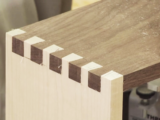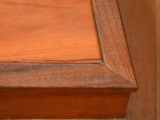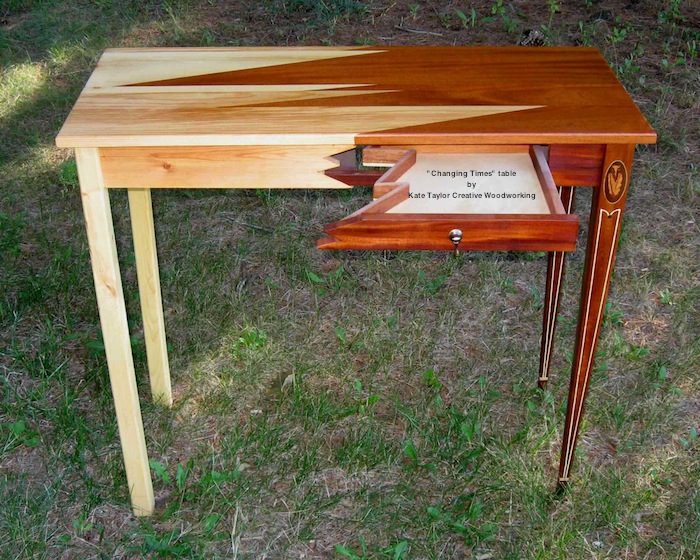
4 Types of Wood Joints
November 11, 2018A good woodworker knows dozens of different types of joinery. But, how do you decide when to use what? One important factor to keep in mind is grain direction and wood movement.
FOLLOW ALONG TO LEARN MORE ABOUT WHEN TO USE DIFFERENT TYPES OF WOOD JOINTS.

Photos and woodwork via Kate Taylor Creative Woodworking
In this series I’ll take a look at some of the more common joints and when it is appropriate to use them. I’ll begin with several quick and easy joints that require little or no shaping of the wood. These all rely instead on some external source for their strength — screws, splines, glue, etc.
1. BUTT JOINTS
Butt joints are simply two pieces of wood attached perpendicularly to each other, using something external, often nails or screws, for strength. Depending on what you use for joining the wood, it can be a perfectly strong joint. However, the joint has no structural integrity on its own.
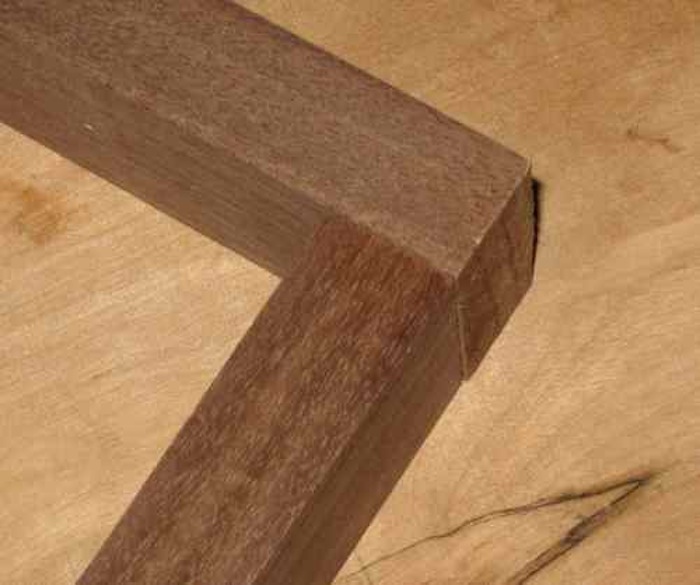
Butt joints are good to use for rough or rustic work or when time is more important than looks. Make sure your joining technique is appropriate for the job (a metal corner bracket might be needed for additional strength, for instance). To dress up a butt joint you can either countersink or plug your nail/screw holes.
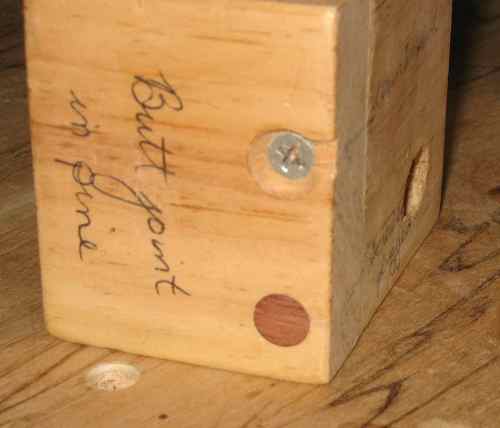
2. POCKET SCREWS
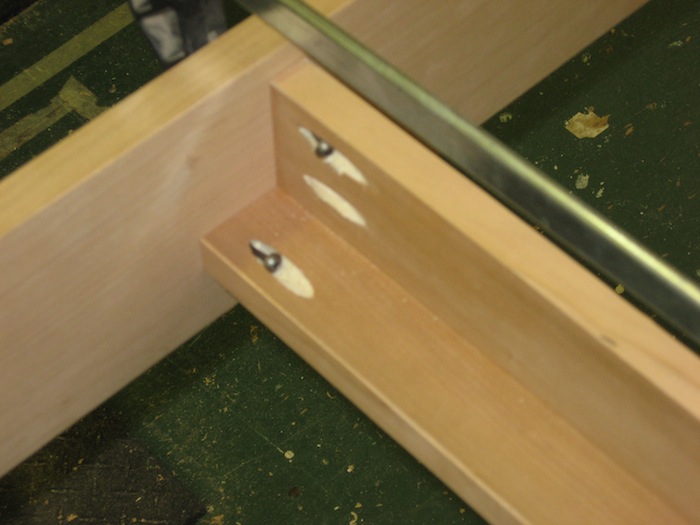
Here is a fast and relatively strong joint. It is great for attaching wood with different grain orientation like table aprons to the legs, or for making face frames. It is a good way to reinforce a butt joint if it is going to be hidden. Because the screws are toe-nailed at an angle into the wood, the joint is much stronger than a typical butt joint where the screws go directly into the end grain.
The advantage of pocket joinery is that it is fast and relatively strong. The disadvantage is that it requires a special jig and drill bit. It is also ugly and has to be hidden.
3. BISCUIT JOINERY
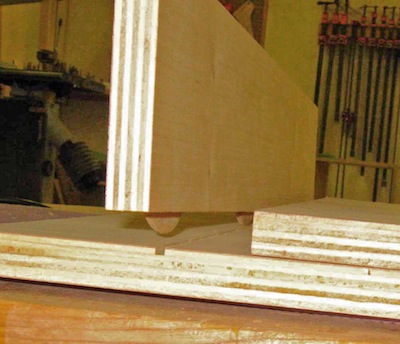
Here wooden “biscuits” are glued into slots cut into the wood to hold two pieces of wood together. This joint excels in plywood and other engineered material. It provides plenty of gluing surface as well as the strength of the biscuits themselves.
Biscuits are good to use for casework and to reinforce and line up edge joints. It’s advantages are that it works well in plywood and it is quick and relatively easy. It is also a hidden joint. The main disadvantage is that layout can be confusing until you get the hang of it.
This cabinet is put together exclusively with biscuit joinery. A face frame will be added later to provide rigidity and to hide the plywood.
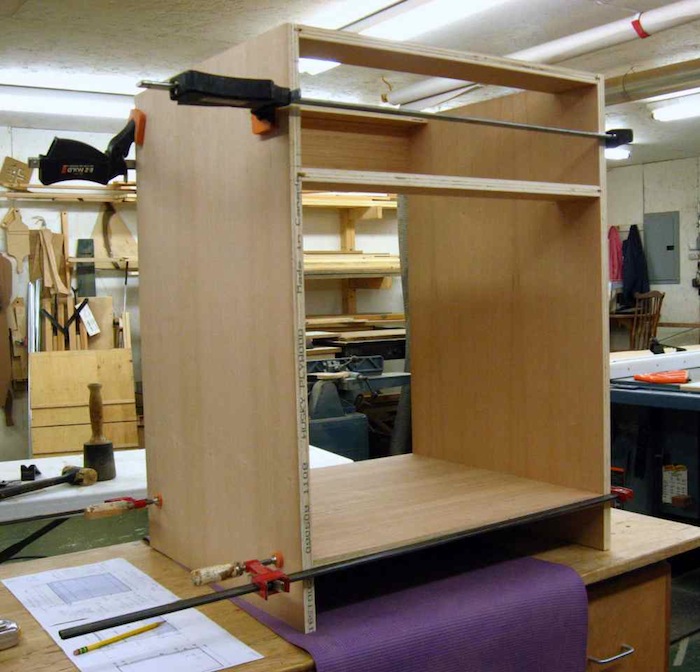
4. MITER JOINTS
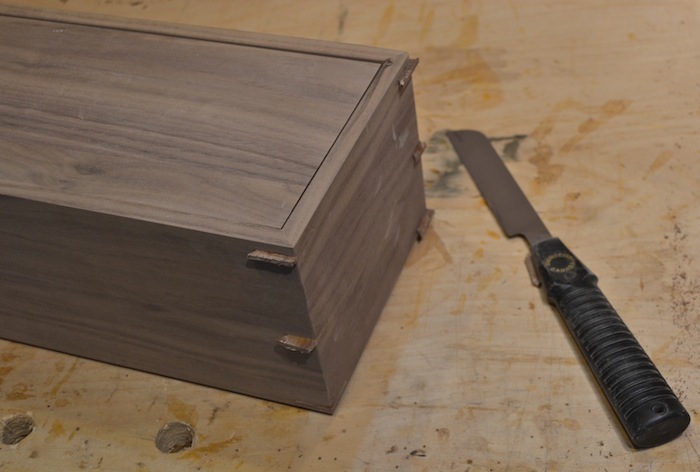
I’m including miters here because on their own they are only as strong as the glue holding them together. They have the advantage of having more glue surface than a straight butt joint, but the joint is still end grain. End grain is notorious for not taking glue well. New glues are incredibly strong and a small box made only with miters will usually hold just fine, but adding a spline is a good idea to strengthen the joint.
Miters are fast and strong with splines. They look nice so the joint itself can add to the design. Their main disadvantage is their weakness. They must also be set up properly so the joint has no gaps.

